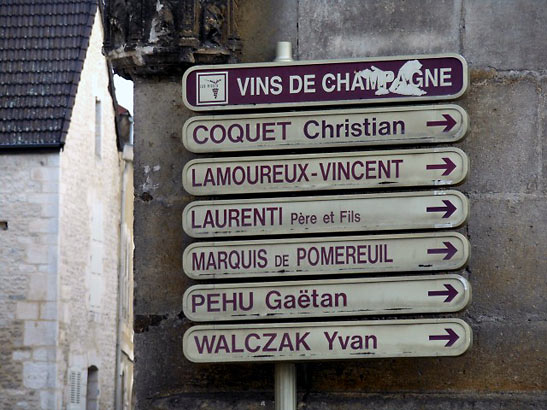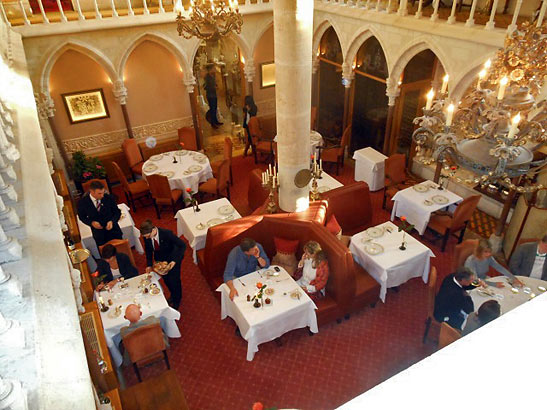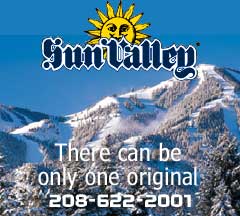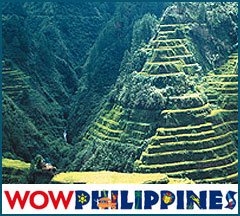 |
 |
|
 |

|
In the Footsteps Of
The Dukes of Burgundy Story and Photos by Corinna Lothar
Philip’s ascent raised the curtain on the golden age of the dukes of Burgundy, a period that runs from 1363 until 1477, when Philip’s great grand-son, Charles the Bold, died in battle and the King of France reclaimed Burgundy. During that 100 years, Burgundy, located between the kingdom of France and the Holy Roman Empire, was independent, rich and powerful, sometimes aligned with England against France. The dukes are gone, but Burgundy is as golden as ever, inviting visitors to lose themselves in the medieval century of the Golden Age of the dukes of Burgundy. Burgundy’s roads are lined with low stone fences, climbing gentle hills guarding the vineyards that produce Burgundy’s famous deep, rich pinot noir and chardonnay grapes, vineyards first brought to Burgundy by the Romans. Black and white Charolais cows graze in somnolent contentment among fields of rapeseed that paint the hillsides as yellow as Dijon mustard.
The city of Dijon was the capital of the Duchy and today is the administrative capital of Burgundy and home to its famous mustard. It’s easy to reach, less than two hours from Paris by TGV high-speed trains. Narrow ancient streets are lined with half timbered houses. The roads south lead to the strip of Burgundy, the Cote d’Or (gold coast) where the wines, some of the best known and most expensive in the world, are produced with patience and care, many of them in small vineyards. History abounds here, and a visitor can hardly avoid punctuating visits to the castles of the Burgundy dukes with frequent sampling stops. “A visitor has two reasons to dally in Burgundy,” an innkeeper remarks with rue and wry, “a little history and a lot of grape. The wine goes best with dalliance.” Pommard, a Clos Vougeot, a Chassagne Montrachet or another of the great regional wines go well with the history. (Philip the Bold forbade the “very mean and disloyal plant named gamay” in favor of pinot noir.) The ducal palace is now the city’s Fine Arts Museum, home to the tombs of Philip the Bold and his son, John the Fearless. Encircling the bottom of the tombs is a procession of 16 inch high mourners, each an individual masterpiece carved in alabaster by Claus Sluter, the Flemish sculptor employed by Philip. The mourners are portrayed in different poses, such as weeping, praying, singing, lost in thought (or perhaps grief); some are carrying a rosary, a bible or small bag.
The facade of the cathedral of Notre Dame, a 13th century Gothic church, is adorned with three stories of gargoyles and columns. It is believed that the 11th century statue of the Virgin Mary in the church protects the town and saved Dijon from the Swiss in the 15th century and the Germans in the 20th. A Jacquemart clock, brought from Flanders by Philip the Bold, keeps time in the tower. A stone owl on the exterior of the church, once said to mark the entrance to the Jewish ghetto, is reputed to bring good luck when touched with the left hand. Small brass owls embedded in the pavement mark the stops for museums, shops and cafes on the 22-stage walking tour of the town’s center. One of the stops, the Maille shop (named for Antoine Maille who provided the king of France with mustard in 1747), sells dozens of exotic varieties of Dijon’s famous mustard. Dijon is also famous for its gingerbread, introduced to Dijon from Flanders during the reign of the dukes. It is made and sold in the delightful shop La Rose de Vergy in many delicious forms.
The castle/fortress in Chateauneuf-en-Auxois is one of the last vestiges of Burgundian military architecture of the 14th century. It was given by Philip the Good, grandson of Philip the Bold, to his advisor, Philippe Pot. The castle is open to the public and during the summer, concerts, performances and other events take place in the castle, which contains 17th century decorations and furniture.
Beaune is the site of another of the dukes’ palaces, which today serves as the Wine Museum of Burgundy, displaying traditional winemaking equipment. The original cellars of the dukes now belong to wine merchant Joseph Drouhin.
In the center of town is the magnificent Hotel-Dieu, the 15th century hospice, founded in 1443 by Nicolas Rolin, chancellor of Duke Philip the Good, and his wife to remedy the poverty and famine suffered by the townspeople after the Hundred Years’ War. The almshouse served the town as a hospital for poor and rich alike until 1971. It contains two masterpieces of medieval art: a polyptych of the Last Judgment by Rogier van der Weyden, and a statue of Christ carved out of a thousand year old oak. The roof is covered in a geometric pattern of glazed polychrome tiles. The Hotel Dieu is now a museum; patients are treated in modern buildings. Since 1851, an annual charity wine auction has taken place in Beaune on the third Sunday of November. For “Three Days of Glory” the city celebrates wine and food. The wine comes from the surrounding vineyards and sets the prices for the year’s vintage. The Hotel le Cep has one of the town’s best dining rooms and its wine “library” consists of dozens of outstanding wines by the glass, a novelty in France. Langres, one of the gateways to Burgundy, was given by an earlier duke to his uncle, Bishop Gautier, in 1179. Ramparts still surround the city, but only a single arch remains of the third century wall, as do 12 ancient towers and 7 gates. Denis Diderot, the encyclopedist, was born here. The city is known for its cutlery, and the National School for Wicker Culture and Basketry is located in the near-by village of Fayl-Billot.
Troyes is a city of art and history in adjoining Champagne. It was here that the Treaty of Troyes was signed in 1420 after the French defeat in the battle of Agincourt, giving Henry V of England and his heirs the throne of France. The term “troy weight,” the unit of mass used for precious metals and gemstones, was coined here. Gorgeous half-timbered houses line its tiny streets, together with 10 churches and a memorial to the 11th century scholar, Rabbi Rashi, who was born in Troyes. A museum of modern art shares a lovely house that was once an ecclesiastical palace. Troyes is home to Europe’s largest factory outlet center. Eating and Sleeping in Burgundy Although the Golden Age of the dukes of Burgundy ended with the death of Charles the Bold, visitors can enjoy ancient lifestyles, but with modern comforts and conveniences. Culinary specialties of Burgundy include beef (from the black and white Charolais cows) Bourguinon, snails, foie gras, and cheese. Little cheese puffs (gougeres) are the traditional accompaniment to aperitif wines and champagne. Signposts along the roads in Burgundy point to the Route des Grand Crus (road of great growths), and the Route du Champagne in the Champagne region, where eighty of the approximately 5,000 family champagne producers have signed up for one of the five champagne circuits. For example, in the three tiny villages that make up Les Riceys, there are nine cellars where tastings are available for a small fee. The region is famous for its pink (rose) champagne.
A wonderful place to stay, fit for an ancient or modern duke, is the stunning 12th century Abbey de la Bussiere-sur-Ouche, close to Beaune and to Dijon. In 2005, it was acquired by British hotelier Clive Cummings and his wife Tanith. They turned the abbey into an English-style country hotel with food that is pure French haute cuisine.
The Chateau de Besseuil in the village of Clesse has a unique arrangement for guests: two or three-bedroom apartments with a large living room and fully equipped kitchen. The comfort is contemporary; the surroundings of another time; the price reasonable. The Chateau de Besseuil is an elegant 19th century manor house, now a hotel-restaurant in a lovely garden. It offers guests a cooking class as well as well-appointed public rooms and guest rooms. The 19th century Chateau de Citeaux in Meursault is a hotel-restaurant and spa specializing in red fruit therapy. The chateau is surrounded by vineyards planted by the Cistercian monks at the end of the 11th century. The wines of the estate can be sampled, along with a very French country picnic at Les Terrasses, a cafe and shop in the village of Meursault overlooking the chateau and the vineyards.
The Chateau de Chamirey is a mansion rather than castle. The winery is a family enterprise run by siblings Amaury and Aurore Devillard. The 17th century winery produces first growth whites and reds, available for tasting. For further information see www.burgundy-tourism.com, www.tourisme-champagne-ardenne.com. Related Articles: |
|
I found a Mich Goss J. Grassmayr Innsbruck bell with Jesus,
a crucifix and a flower on it. Do you have any information about it you can
share with me? Many thanks. I don't have any information on that specific bell. If she wants information, "Liz" in San Bernardino should contact the factory. Here is the information: Address Grassmayr Foundry and Bell Museum, Leopoldstrasse 53, Inssbruck, A-6010 Austria. Telephone: 43 512-59416-0. Fax: 43 512-59416-22. E-mail: johannes@grassmayr.at or info@grassmayr.at. Corinna
Been there -- thought I'd done it -- you proved me wrong. Great travel coverage -- even for those who have lived there. --- Bill, Redmond, Oregon
Corinna, my dear, What a wonderful series of words you have collected together to paint a mesmerizing story about one of my favorite places. Even though I've traversed these same locales as you many times, your delightful descriptions made me want to book a flight this very second and see again some of the places that time did not allow me to linger in before. Your photos are also riveting, and I loved the pantyhose one - what a clever, sexy way to promote that article of the female form. Your colorful words make the entire region literally come alive before my eyes - a rare gift for any writer! Bravo and again Congrats on your top notch feature. Best regards. Best regards,
Hello Corinna, This is very roundabout ... I was recently teaching (Legal Reasoning) in Kabul and encountered Ann Geracimos, who said she knows you from the Times. She recently provided me with an electronic version of your 2007 piece about returning to Frankfurt (which I enjoyed very much). Jonelle and I are well (and enjoying our 3 grandchildren, who live within blocks of our house). I hope you are well. I will now look for your travel writing regularly. Best regards,
What an amazing background Ms. Lothar has! I enjoyed her article
very much. I found it to be quite intriguing, especially the interpreter school
bit.
I loved your article on Metz. I was an exchange student living there from 1981-1982 and have always felt like Lorraine was the most overlooked part of Europe. You really captured the feel of the city with your photo and articles.
|
This site is designed and maintained by WYNK Marketing. Send all technical issues to: support@wynkmarketing.com



































